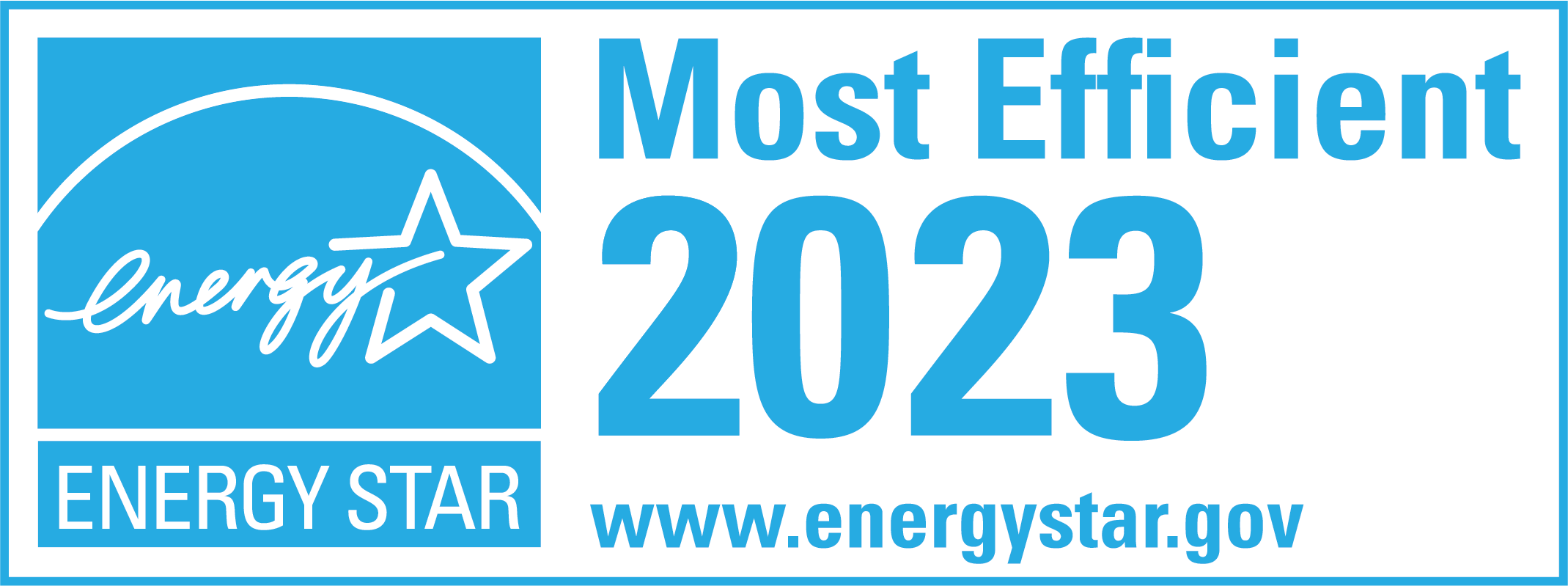Windows are a crucial feature of a home or building, providing natural light and ventilation. However, they can also significantly contribute to energy loss and higher utility bills. When choosing windows, one common question arises – are wood windows energy efficient? This article will explore the factors that impact window energy efficiency and how wood windows compare to other materials.
We don’t sell or install wood windows at Window Depot USA of Dallas but we answer questions about them. Most homeowners around DFW with wood windows are looking for a lower-cost replacement window that requires less maintenance. 9 out of 10 of our clients replace wood windows with vinyl. Still, for those that must have wood, we recommend using a certified Andersen window dealer for your project.
Understanding energy efficiency in windows
Before diving into wood windows’ energy efficiency, it’s important to understand what energy efficiency means. Energy efficiency refers to the ability of a window to prevent heat transfer between the interior and exterior of a building. A window that is energy efficient can reduce heat loss in the winter and heat gain in the summer, resulting in lower energy bills and increased comfort.
What is energy efficiency?
Energy efficiency is important when choosing windows for your home or office. It is measured using a metric called the U-value. The U-value measures the rate at which heat flows through a window. The lower the U-value, the better a window prevents heat transfer. Another metric is the Solar Heat Gain Coefficient (SHGC), which measures the amount of solar radiation that enters a window. A lower SHGC means less solar radiation enters the building, reducing the need for air conditioning in the summer.
Several factors can impact window energy efficiency. These include the window frame material, glazing, and design. Window frames can be made from wood, vinyl, aluminum, or fiberglass, each with varying levels of thermal conductivity. The number of panes of glass and the type of coating used on the glass can also impact energy efficiency. Finally, the design of the window itself, including its size and orientation, can affect how much heat is lost or gained through it.
Factors affecting window energy efficiency
When it comes to window frames, wood is an excellent choice for energy efficiency. Wood is a natural insulator, meaning it is a poor conductor of heat. This makes it an excellent choice for reducing heat transfer between the interior and exterior of a building. In addition, wood frames are durable and long-lasting, making them an excellent investment for homeowners.
Another factor that can impact window energy efficiency is glazing. Double-paned windows are a popular choice for energy-efficient homes. These windows feature two panes of glass separated by a layer of gas or air. This layer of gas or air acts as an insulator, reducing heat transfer through the window. Low-emissivity (Low-e) coatings can also be added to the glass to reduce heat transfer.
The design of the window itself can also impact energy efficiency. Windows that are oriented to face the sun can allow a significant amount of heat to enter a building, increasing the need for air conditioning. However, windows that are properly shaded or designed with overhangs can reduce the amount of heat that enters the building, reducing the need for air conditioning and lowering energy bills.
In conclusion, there are several factors to consider regarding energy efficiency in windows. Choosing wood frames, double-paned windows, and Low-e coatings can all help to reduce heat transfer and lower energy bills. Properly designed windows can also help to reduce the amount of heat that enters a building, increasing comfort and reducing the need for air conditioning.
The composition of wood windows
Wood windows are not only known for their natural beauty but also for their energy efficiency. They are popular for homeowners who want to reduce their energy bills and carbon footprint. Let’s take a closer look at the types of wood used for windows and how they are constructed.
Types of wood used for windows
Wood windows can be made from various tree species, each with unique characteristics. Pine is a commonly used wood for windows because it is affordable and easy to work with. Fir is another popular choice because it is durable and has a tight grain that resists warping. Oak is a hardwood known for its strength and durability, making it ideal for windows that withstand harsh weather conditions. Mahogany is a high-end wood prized for its beauty and resistance to rot and decay.
The type of wood used can impact the window’s performance since different woods have varying levels of density and thermal conductivity. For example, hardwoods like oak and mahogany are more dense than softwoods like pine and fir, which means they are better insulators. Most wood windows are made from sustainably sourced wood, making them an eco-friendly choice.
Wood window construction and design
The design and construction of wood windows can also impact their energy efficiency. Wood frames can be made with thermal breaks, which are barriers that reduce the amount of heat transferred through the frame. This means that the frame will not conduct heat from the inside to the outside of the window, keeping your home warm in the winter and cool in the summer. Additionally, wood windows can be designed to be airtight, preventing air leaks that can result in energy loss.
Another important factor to consider is the glazing of the window. Double or triple-pane glass in windows is more energy-efficient than single-pane windows because they provide an extra layer of insulation. Low-emissivity (Low-E) glass is another option for improving energy efficiency. This type of glass has a thin coating that reflects infrared light, which helps to keep heat inside your home during the winter and outside during the summer.
In conclusion, wood windows are not only beautiful but also energy-efficient. The type of wood used, the design and construction of the window, and the glazing all play a role in determining the window’s energy efficiency. By choosing wood windows, you can reduce your energy bills and contribute to a more sustainable future.
Comparing wood windows to other window materials
Choosing the right window material is important regarding energy efficiency and aesthetics. Wood windows are popular among homeowners due to their natural beauty and insulation properties. However, to determine how energy-efficient wood windows are, we must compare them to other materials such as vinyl, aluminum, and fiberglass.
Wood vs. vinyl windows
Vinyl windows are often touted as cost-effective but fall short in energy efficiency. While they offer decent insulation, they cannot match wood’s warmth and natural insulation properties. Additionally, vinyl windows lack the natural beauty and charm of wood windows, making them less desirable for homeowners who value aesthetics.
Another factor to consider when comparing wood and vinyl windows is durability. Wood windows are known for longevity and can last up to 30 years with proper maintenance. On the other hand, vinyl windows have a lifespan of around 20 years and can become brittle and crack over time. However, most vinyl windows offer a superior manufacturer’s warranty that can span the window’s life, compared to 15 or 20 years for wood options.
Wood vs. aluminum windows
Aluminum windows are lightweight and low-maintenance but are a poor energy-efficient choice. Aluminum is highly conductive and offers little insulation, making it a poor option for climates with extreme temperatures. In addition, aluminum windows lack the natural beauty and warmth of wood windows, which can be a dealbreaker for homeowners who value aesthetics.
Another drawback of aluminum windows is their tendency to corrode and rust over time, especially in coastal areas where saltwater can cause damage. This can lead to costly repairs and replacements, making wood windows a more cost-effective option in the long run.
Wood vs. fiberglass windows
Fiberglass windows are becoming popular among homeowners due to their durability and energy efficiency. They offer excellent insulation and are highly resistant to warping, rotting, and cracking. However, they do not offer the same aesthetic appeal as wood windows. Regarding energy efficiency, wood and fiberglass windows are comparable, with both materials offering excellent insulation.
Regarding maintenance, fiberglass windows require very little upkeep and can last up to 50 years. However, they are more expensive than wood windows and may not be a viable option for homeowners on a tight budget.
Conclusion
While each window material has its own advantages and disadvantages, wood windows remain a popular choice among homeowners due to their natural beauty and insulation properties. They offer excellent energy efficiency, durability, and longevity, making them a cost-effective option in the long run. However, it’s important to weigh your options carefully and choose the window material that best fits your needs and budget.
Insulation properties of wood windows
Wood is a natural insulator, making it an excellent material for window frames. Regarding energy efficiency, the insulation properties of windows play a crucial role in keeping your home comfortable and reducing your energy bills. Let’s take a closer look at the thermal performance of wood and how it can impact energy efficiency.
Thermal performance of wood
Wood has a low thermal conductivity, meaning it does not transmit heat well. This property makes wood ideal for windows, as it can insulate and retain heat. Additionally, wood has a high specific heat, allowing it to store heat energy. This means that wood windows can help keep your home warm in the winter and cool in the summer.
Compared to other window materials, such as aluminum or vinyl, wood has a much higher R-value. The R-value measures the ability of a material to resist heat flow, with higher values indicating better insulation. This means that wood windows can help reduce heat loss and gain, leading to significant energy savings over time.
Air leakage and sealing in wood windows
Achieving maximum energy efficiency with wood windows requires proper sealing and insulation. Air leaks around the frame and glass can significantly impact energy loss. However, wood windows can be designed to be airtight, reducing air leaks and improving energy efficiency.
One way to improve the airtightness of wood windows is by using weatherstripping. Weatherstripping is a material that seals the gap between the window sash and frame, preventing air from leaking in or out. Many weatherstripping types are available, including foam, felt, and vinyl. Choosing the right type of weatherstripping for your wood windows can help improve their energy efficiency.
Another way to improve the energy efficiency of wood windows is by using double-pane or triple-pane glass. These windows have two or three panes of glass separated by an insulating gas, such as argon or krypton. This design helps reduce heat transfer through the glass, improving the window’s overall thermal performance.
In conclusion, wood windows offer excellent insulation properties that can help improve your home’s energy efficiency. With proper sealing and insulation, wood windows can help reduce energy loss and save you money on energy bills. So if you’re in the market for new windows, consider choosing wood for its natural insulation properties.
The role of glazing in wood window energy efficiency
The type of glass used in a window can impact its energy efficiency. Let’s look at some of the features of window glass that can contribute to energy efficiency.
Single, double, and triple glazing
A single-pane of glass offers little insulation and is not recommended for areas with extreme temperatures. Double and triple glazing provide improved insulation, with the added benefit of reducing noise pollution.
Low-emissivity (Low-E) glass
Low-E glass coatings are designed to reflect heat back into the room, reducing heat loss through the window. They also filter out harmful UV rays, protecting furniture and other items in the room from sun damage.
Gas fills and spacer bars
Gas fills, such as argon or krypton, can be used between window panes to provide additional insulation. Spacer bars are used to separate the panes of glass, reducing heat transfer through conduction.
Conclusion
Overall, wood windows can be a highly energy-efficient option for window materials. Proper design, construction, and glazing can all contribute to improved insulation and reduced energy loss. Wood windows offer superior energy efficiency compared to aluminum frames.
However, we don’t offer wood windows at Window Depot USA of Dallas, Texas. We sell and install premium vinyl windows because we believe they offer the most value of any material. Call us at 214-399-9592 for pricing and availability.






